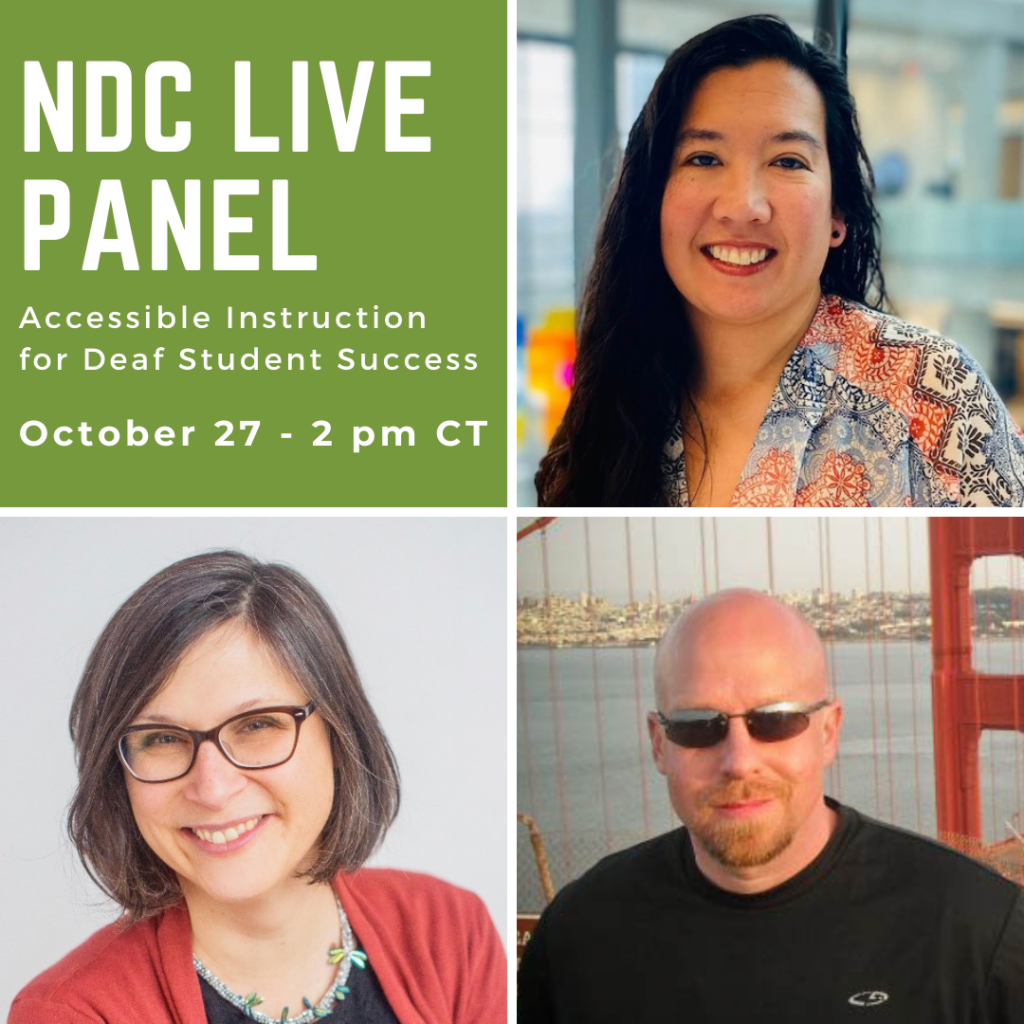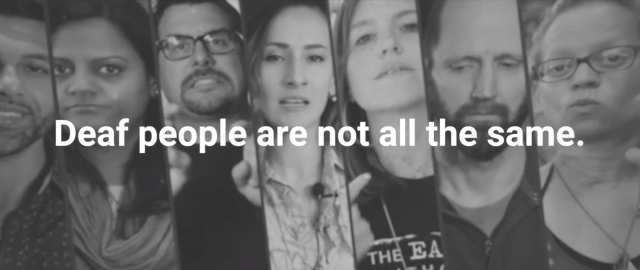The Shift to Online Life Creates Opportunity, and Challenges, for Deaf People
Dr. Carrie Lou Garberoglio gave a keynote address at the TDI 24th Biennial Conference on July 27. The conference, with the theme “Reset and Reconnect,” reflects the seismic change many had to make by embracing new ways of participating in educational, medical, or employment activities in a virtual space. This change has created a wake-up call to ensure full virtual access for deaf students, families, and workers.
Live Panel October 27: Accessible Instruction for Deaf College Students During COVID-19 and Beyond

Ensuring that every student has access to your instruction is more important than ever, yet can be more challenging due to the pandemic — whether you’re teaching online, in person, or a little bit of both.
Learn How to Build a Mentoring Program for Deaf Youth in New Three-Hour Online Course

This course is free and open to all. It is a self-paced professional development online course designed for professionals, community members, transition counselors, interpreters, and anyone interested in learning about creating a mentoring program.
New Online Course Teaches How to Design a Successful Summer Program for Deaf Youth

Designing Summer Programs for Deaf Youth, a new self-paced course available in the online learning library of the National Deaf Center on Postsecondary Outcomes (NDC), provides evidence-based and deaf-centered insights, real-world examples, and measurable objectives to create, launch, and evaluate a successful summer camp or program to help deaf youth achieve educational and employment success after high school.
New Resource for Disability Support Professionals: Making Online Learning Accessible for Deaf Students

Making Online Learning Accessible for Deaf Students: Tips for Disability Student Services provides a clear, easy-to-understand guide to the legal obligations, best practices, and resources available to ensure deaf students get the same education as their peers when classes are online.
New Resource Offers Tips for Teaching Deaf Students Online

Tips for Instructors: Teaching Deaf Students Online, a new resource from NDC, helps teachers and professors ensure their course remains fully accessible and that deaf students are included in decisions about accommodations, access, and more.
New Work Based Learning Course Launched by National Deaf Center

Developing Accessible Work Based Learning Programs, a new online course available in the National Deaf Center’s learning library, offers practical insights and resources to improve employment outcomes — and close substantial employment gaps — for deaf youth.
Checklist for Teaching Deaf Students Online
As schools across the country transition to online courses in response to COVID-19, educators are working to ensure students receive the same quality education they received in the classroom. For deaf students, this means all course content must be accessible and equitable.
This checklist for teaching deaf students online helps educators meet their needs and ensures compliance with the law. Stay tuned for a new National Deaf Center resource in the coming weeks, which will expand the checklist with more detailed tips and advice.
National Deaf Center Releases Online Course, Deaf 101, to Provide Tools to Communicate Effectively with Deaf Individuals

How much do you know about deaf people? Whether you’re an ASL student, a teacher or coworker of a deaf person, about to hire a deaf employee, or just plain curious, it’s worth taking some time to understand what it means to be deaf and how to interact with deaf people. If only there was an easy course online somewhere. Look no further! The National Deaf Center on Postsecondary Outcomes (NDC) launched Deaf 101 today.
Cawthon to Present at 2019 OSEP Leadership Conference on Research-to-Practice Connections
National Deaf Center Director Stephanie Cawthon, Ph.D., will present at the 2019 OSEP Leadership Conference on making research-to-practice connections with states and other stakeholders.





